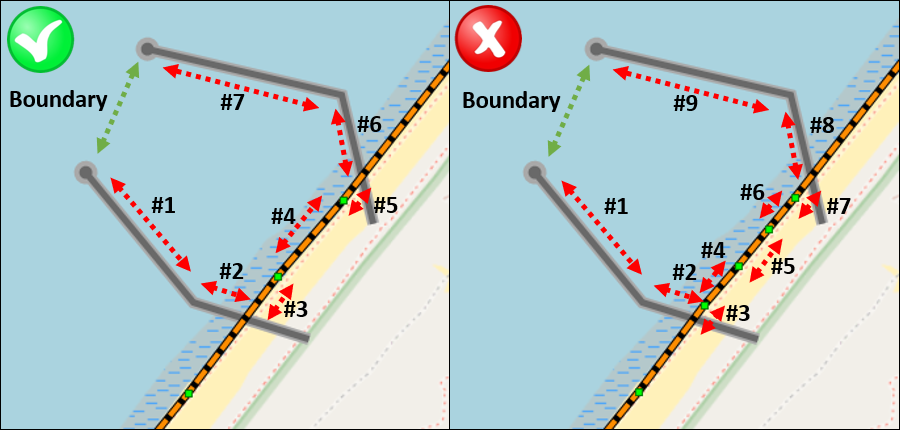...
Wave penetration can be calculated in two ways, depending on the user preference. Using an analytic method, in which wave panatration penatration is computed on a grid within the harbour basin and is based on Cornu spiral waves propagating into the harbour basin. Note that this does not take into account processes such as reflection and diffraction. Besides, also a numerical method can be selected, which uses the Diffrac2DH schemisation to find the penetration patterns of waves entering the harbour basin. This method takes reflection and diffraction into account, though only considers a (single) monochromatic wave. Results of wave penetration should however be interpreted with a considerable range of uncertainty.
...
- Analytical - Wave penetration is computed on a grid within the harbour basin and is based on on the Cornu spiral waves propagating into the harbour basin principle (solving the Sommerfeld equations incl. Fresnel integrals). Note that this does not take into account processes such as wave reflection and diffraction.
- Diffrac2DH - Wave penetration is computed using the numerical Diffrac2DH schemisationDiffrac2-DH schemisation (solving the Helmholtz equation). This method takes reflection and diffraction into account.
Literature
More information (literature) about the internal workings of the analytical and Diffrac-2DH calculations can be found here:
- Analytical
- Goda, Y., Takayama, T. and Suzuki, Y., “Diffraction diagrams for directional random waves,” Proc. 16th International Conference Coastal Engineering. (Hamburg, 1978) pp. 628-650.
- Carr, J.H. and Stelzriede, M.E. 'Diffraction of Water Waves by Breakwaters' (Section 2.2 in particular)
- M.R., Boshek., "Reflection and Diffraction Around Breakwaters"
- Wolfram MathWorld - Cornu Spiral
- LibreTexts Physics - Cornu's Spiral
- Key equations:
- Fresnel integrals:
- Fresnel integrals:
- Diffrac-2DH
- Diffrac User-Manual (Appendix C in particular)
- Key equations:
- Helmholtz equation:
- Horizontal boundary condition equation:
- Helmholtz equation:
Tool limitations
Diffrac-2DH can only handle a maximum of eight (8) reflective boundaries. This means that the number of structure and coastline points should not result in more than eight reflective boundaries in total (excl. open boundary).
In the image below, this concept is visually shown, in the left panel, a total of 7 reflective boundaries are defined (which is ok), in the right panel, a total of 9 reflective boundaries are defined (this is too much).
For the situation in the right panel, only the analytical formulation can be used (or the number of coastline points in between the breakwaters reduced).
The following processes are not included in the tool: wave directional spreading, bed level changes throughout the harbor, wave reflection (in case of using the analytical method) or varying reflection values (in case of Diffrac2DHDiffrac-2DH), etc.
More information on the limitations can be found through the provided literature.
Results of the wave penetration tool should therefore be interpreted with a considerable range of uncertainty.
...



